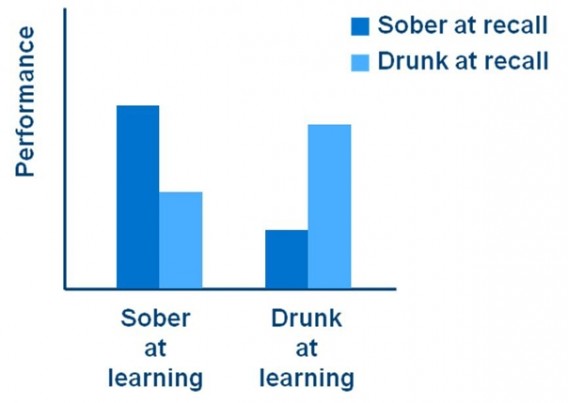You know that persuasion is a powerful weapon. Perhaps you’ve even read our 18 Cognitive Biases You Can Use for Conversion Optimization and realized that you are definitely not dealing with rational visitors. And anyone doing conversion optimization should know Cialdini’s 6 principles of persuasion.
However, there is so much more to persuasion than what can be boiled down to a handful of core principles. There are many other, lesser known persuasion techniques that you can use to increase your conversion rate.
If you’re not aware of them and how they impact your visitors, you’re leaving money on the table.
Table of contents
- 1. Yerkes-Dodson Law
- 2. Mimicry
- 3. Hobson’s+1 Choice Effect
- 4. Base Rate Fallacy
- 5. Availability Heuristic
- 6. Cheerleader Effect
- 7. Hot-Hand Fallacy
- 8. IKEA Effect
- 9. Facial Distraction
- 10. Ambiguity Aversion
- 11. Eaton-Rosen Phenomenon
- 12. Barnum Effect
- 13. Context Effect
- 14. Peak-End Rule
- 15. Rosy Retrospection
- 16. Sex & Signalling
- 17. Status Quo Bias
- Conclusion
1. Yerkes-Dodson Law
The Yerkes–Dodson law is an empirical relationship between arousal and performance, originally developed by psychologists Robert M. Yerkes and John Dillingham Dodson in 1908. The law dictates that performance increases with physiological or mental arousal, but only up to a point. When levels of arousal become too high, performance decreases.

Bart Schutz, Online Dialogue:
“When we are promised a higher incentive for a better performance, we want to perform better. At low incentive levels this increased motivation pays off. We do perform better. However, at some point increasing the incentive and thereby motivation even further, starts to backfire: we perform (a lot) worse.
This Yerkes-Dodson Effect applies to mental tasks. Tasks involving cognitive effort, resulting in an inverse U graph: first performance increases with rising incentives, but only until it reaches an optimum, and then starts decreasing steeply as incentives rise further.
This effect does not apply to mechanical tasks, requiring only the control over your muscles. It does however apply to both economical and social incentives (‘social motivators’).” (via Wheel of Persuasion)
How to Use It:
- If buying and using your product is a mental task, incentivizing behavior can work, but you must run tests to quickly find the point where incentives begin to backfire.
- If buying and using your product is a physical task, incentivizing behavior will work well and you can offer high incentives without fear of backfire.
- Any incentive you offer can potentially change your visitors’ motivation from intrinsic to extrinsic, meaning their buying and use becomes dependent on the incentive.
2. Mimicry
Mimicry refers to the (often subconscious and automatic) imitation of other people’s behavior. You yawn when I yawn. You smile when I smile. You shake your foot when I shake my foot.

Joanna Wiebe, Copy Hackers & Airstory:
“We steal words, phrases and stories. From innocents.
We pore over voice of customer data – from surveys, focus groups, product studies, market research, one-on-one interviews, usability studies. From countless sources. And as we’re picking through all that data, we’re making note of:
- Exactly how ‘real people’ describe our product
- The multiple benefits and points-of-value they talk about
- Anything they absolutely rave about
- Specific things they don’t like about products similar to ours
- Suspicions they have / Ways they’ve been burned before
- The exact real-life problems our product helps them minimize or solve
- Interesting analogies and similes they use” (via KISSmetrics)
How to Use It:
- Mimic your visitors’ by: using the words and phrases they use to describe you in your copy, using the same tone / style as they do, repeating the keywords they used to find you in your copy, using pictures of them or people just like them, etc.
- Encourage your visitors to mimic you by: using pictures / videos of other customers buying and using your product, using testimonials near the call to action, using social media to show which of their friends have purchased, etc.
3. Hobson’s+1 Choice Effect
More choices give us positive emotions, for example due to feelings of autonomy and the affective forecasting error. But more choices also give more negative emotions since we – for example – miss out on more and more options (‘opportunity costs’) and chances of regret.
Barry Schwartz, author of The Paradox of Choice, uses the following graph to demonstrate this effect:

So, no options is bad. One option makes you feel dramatically better. Two options gives you some autonomy and the “missed opportunity” factor is minimal since there’s only one other option.
How to Use It:
- Offer two choices (e.g. add to cart, save to wishlist, print, tweet it) to first-time visitors at critical decision points (e.g. near your call to action), even if both options eventually lead to the same outcome (e.g. buying your product).
4. Base Rate Fallacy
Base rate fallacy, also called base rate neglect or base rate bias, is a formal fallacy. If presented with related base rate information (i.e. generic, general information) and specific information (information only pertaining to a certain case), the mind tends to ignore the former and focus on the latter.
How to Use It:
- Visitors will tend to ignore the base, so you can give your numbers a persuasive boost by experimenting with it (e.g. “100% of customers active within the last 30 days would recommend us.” vs. “75% of all customers would recommend us.”)
5. Availability Heuristic
The availability heuristic is a mental shortcut that relies on immediate examples that come to a given person’s mind when evaluating a specific topic, concept, method or decision. The availability heuristic operates on the notion that if something can be recalled, it must be important, or at least more important than alternative solutions which are not as readily recalled.
Subsequently, under the availability heuristic people tend to heavily weigh their judgments toward more recent information, making new opinions biased toward that latest news.
Consider this question: Are sharks or horses deadlier? I’m willing to bet most people will confidently respond with, “Sharks.” Easy question, right? We’ve all seen Jaws. However, the real answer might surprise you. CogSai explains…
How to Use It:
- Since media is often top-of-mind, use case studies and testimonials from clients often covered in the media or make pop culture comparisons in your copy / images.
- Use anecdotes, humor, nostalgia and rhymes to enhance recall.
- Anything surprising or emotional will catch attention and enhance recall, so use surprise and emotion at critical decision points / points of friction.
6. Cheerleader Effect
The cheerleader effect, also known as the group attractiveness effect, is the cognitive bias which causes people to think individuals are more attractive when they are in a group. The effect occurs because of the brain’s tendency to calculate the average properties of an object when viewing a group.
How to Use It:
- If you are in a market with stiff competition, encourage comparison (price, product features, packaging, etc.) whenever possible. Your product will appear better in a group than on its own.
- Create strategic partnerships (webinars, eBooks, sponsorships, etc.) with non-competitive companies. By grouping yourself with them, you will appear more attractive to potential customers.
7. Hot-Hand Fallacy
The “hot-hand fallacy” (also known as the “hot hand phenomenon” or “hot hand”) is the fallacious belief that a person who has experienced success with a random event has a greater chance of further success in additional attempts.
How to Use It:
- Have customers complete a simple, impossible-to-fail task either before they convert or at the beginning of the “onboarding” process (i.e. the first task they complete when they receive your product).
- Highlight your company’s successes (e.g. upcoming speaking engagements for the CEO, press mentions, client wins, awards won, etc.) If you’re marketing an info product, this is especially impactful.
8. IKEA Effect
The IKEA effect is a cognitive bias in which consumers place a disproportionately high value on products they partially created. The name derives from the Swedish manufacturer and furniture retailer IKEA, which sells many furniture products that require assembly.

Daniel Mochon, A. B. Freeman School of Business:
“Imagine that, you know, you built a table. Maybe it came out a little bit crooked. Probably your wife or your neighbor would see it for what it is, you know? A shoddy piece of workmanship. But to you that table might seem really great, because you’re the one who created it. It’s the fruit of your labor. And that is really the idea behind the Ikea Effect.” (via NPR)
How to Use It:
- Offer customizations on eCommerce products. Have customers choose the size, the color, the style of fit, etc. so that they become part of the creation process.
- Encourage SaaS customers to help improve the product. For example, 15Five (an employee review / feedback tool) occasionally asks their customers to suggest great questions to ask employees to help other customers. Also, Trivia Crack, a mobile trivia app, asks users to create questions.
- During the onboarding process, have customers create something as quickly as possible. For example, Buffer encourages users to schedule their first post as quickly as possible and Canva encourages users to create their first image as quickly as possible.
9. Facial Distraction
When we (subconsciously) notice faces in our surroundings, we tend to first scan those faces, before looking at anything else. Moreover, we cognitively process those faces thoroughly.

Bart Schutz, Online Dialogue:
“Offline, this can work pretty persuasive. When someone looks at you, you look back and perceive all their facial expressions. Even more important, you pay more attention to their verbal message as well. Online however, the same thing happens, and that works counter effective. Your message is – most of the time – written in text, other images, bulleted lists etc. and a face on the page will distract attention, and therefore decrease your persuasiveness.” (via Wheel of Persuasion)
How to Use It:
- If you have a famous (yes, “industry famous” counts) customer or advocate, use their face on promotional materials.
- Since you already have visitors’ attention when they’re on your site, don’t use faces. If you do, make sure they are looking at and positioned towards your call to action.
10. Ambiguity Aversion
Ambiguity aversion (also known as uncertainty aversion) is a preference for known risks over unknown risks. An ambiguity averse individual would rather choose an alternative where the probability distribution of the outcomes is known over one where the probabilities are unknown.
How to Use It:
- Be as specific and detailed about your product, your most wanted action and what happens next as you can to eliminate ambiguity. Ignore generalized rules like “everything below the fold gets ignored“.
- Use certain discounts and coupons instead of offering a “chance” to win a prize.
- Highlight your guarantees and quality assurances (e.g. return policies, satisfaction guarantees, etc.)
- Identify uncertainties and ambiguity on your site as well as your competitors’ sites. How can you eliminate them and make the superior offer?
11. Eaton-Rosen Phenomenon
The rhyme-as-reason effect (or Eaton-Rosen Phenomenon) is a cognitive bias whereupon a saying or aphorism is judged as more accurate or truthful when it is rewritten to rhyme.

Amy Harrison, HarrisonAmy Copywriting:
“Not only can rhyming copy make your words more memorable (think about how many songs or playground chants you can recite from years ago), but it is more likely to influence your reader into believing the content.
So don’t rule out using a catchy rhyming phrase to sell the benefits of your product or service. It might just be in the minds of your readers for years to come.” (via Copyblogger)
How to Use It:
- Just as “If the glove doesn’t fit, you must acquit.” worked for O.J. Simpson, rhyme can convince your visitors that your product is the only option. Use rhyme in your tagline, unique selling proposition, near your call to action, near trust icons and guarantees, etc.
12. Barnum Effect
The Barnum effect, also called the Forer effect, is the observation that individuals will give high accuracy ratings to descriptions of their personality that supposedly are tailored specifically for them, but are in fact vague and general enough to apply to a wide range of people.
P.T. Barnum is famous for having said, “Always have a little something for everyone” and “There’s a sucker born every minute.”
The Barnum effect is demonstrated in Psychology in Action, 4th Edition by Karen Huffman, Mark Vernoy and Judith Vernoy. They start by asking you to read this horoscope…
You have a free-wheeling, adventuresome spirit. When others try to bring you down to earth with facts and responsibilities, you strongly resist. People who get in your way may suffer your wrath. While you may be quick to temper, your quick-witted responses and charming nature often come to your rescue.
Your strength and persistence are admired by all, and your careful nature will help you gain great financial rewards. Your idea of a romantic evening is a bottle of wine, a soft blanket, and your partner lying in front of a warm fire–in your own house behind locked doors!
While your partner may appreciate this same scene, and your protective nature, beware that you do not overdo your prudent way with money. Invest in a good bottle of wine–the kind with a cork.
Does the horoscope describe your personality? Most people will be able to find something relatable and think, “Yep, sounds like me.” Of course, the horoscope is “totally bogus”, just like most pseudo personality tests online.
How to Use It:
- Referring to general personality traits and problems (e.g. “Do you hate losing money?” or “Are you the type of person who likes beach vacations?”)
- Describe your product as “perfect for X type of people”. Make sure X is a general trait that anyone in your target demographic can identify with. Better yet, have someone influential in your space describe your product as “perfect for X type of people, like me”.
13. Context Effect
That cognition and memory are dependent on context, such that out-of-context memories are more difficult to retrieve than in-context memories (e.g., recall time and accuracy for a work-related memory will be lower at home, and vice versa).
Essentially, the better you can recreate the context in which the memory was formed, the better your visitor will be able to recall it. Consider, for example, this chart from Wheel of Persuasion…
How to Use It:
- When trying to reactivate a customer, remind him of products he’s purchased (e.g. “It’s been six months, it’s time to replace that toaster.”) or related tasks he’s performed in the past (e.g. “This time 3 years ago, you shared this picture with all of your friends.”)
- If you want your visitor to make the decision for work, set the context. Ask for his work email, show relevant imagery and use industry terminology, have retargeting ads display during regular business hours, etc.
14. Peak-End Rule
The peak–end rule is a psychological heuristic in which people judge an experience largely based on how they felt at its peak (i.e., its most intense point) and at its end, rather than based on the total sum or average of every moment of the experience. The effect occurs regardless of whether the experience is pleasant or unpleasant.
How to Use It:
- Through qualitative and quantitative research, identify your peaks (e.g. initial purchase, first experience of the value proposition, etc.) and how customers feels at those points. There will be multiple peaks, but one will be more intense than the others.
- Also consider all of the exit points throughout your funnel small peaks.
- Resolve any issues that may be creating negative feelings at those peaks. Use incentives and gamification to create positive feelings.
15. Rosy Retrospection
Rosy retrospection refers to the finding that subjects later rate past events more positively than they had actually rated them when the event occurred. The effect appears to be stronger with moderately pleasant events and is usually explained as a result of minor annoyances and dislikes “fading” from memory dramatically faster than positive situations.
How to Use It:
- Use nostalgia (old pictures, old terms and phrases, authentic or recreated video, etc.) to put your visitors in a good mood or associate your product with a happy time in their lives. Calling upon their memories of a certain time period (e.g. the 90s, their college years, their high school glory days, etc.) can help do so as they’ll remember the positive aspects the forget minor negative aspects.
16. Sex & Signalling
A large part of our evolved behaviour involves our desire to signal important traits and qualities to potential mates, allies and rivals. When buying a product, what traits does the consumer believe they will be signalling?

Jason Collins, Economist and Public Policy Specialist:
“When humans are seeking a mate, you want to know as much as you can about them. You want to know their intelligence, their health, the level of conscientiousness, their kindness, the resources at their disposal and so on. You can’t just see this straight away – so people seek to signal these traits. And the products they buy are a major part of that signal.” (via Evolving Economics)
How to Use It:
- Conduct qualitative research to figure out what adjectives your current customers associate your product with. From an evolutionary standpoint, humans desire to signal that they are well off financially, smart, conscientious, physically fit, agreeable, etc.
17. Status Quo Bias
Status quo bias is an emotional bias; a preference for the current state of affairs. The current baseline (or status quo) is taken as a reference point, and any change from that baseline is perceived as a loss.
How to Use It:
- Craft copy, phrase questions and create calls to action in a way that you prefer customers not act at all. For example, you might prefill answers or forms, almost creating an “opt-out” situation.
- If you must ask visitors to deviate from the status quo, make sure you (a) force the choice and (b) provide a deviation that is simple and frictionless.
Conclusion
Persuasion is so powerful because the best decision is the one your customer thinks she made herself. [Tweet It!]
Every element of your site is persuading visitors in one way or another. It’s your responsibility to be aware of all the techniques at play and how they influence your specific demographic.
- Persuasion works better than force.
- There is more to persuasion than a handful of basic principles. Even these 17 techniques are just the tip of the iceberg.
- The brain is a complex thing. These techniques will not affect every audience the same way, so experiment heavily.





Thanks for the in-depth article Shanelle! Some really interesting points one here, which I’m looking forward to trying out.
My pleasure, Caspar. Thanks for reading! You might also like…
https://cxl.com/cognitive-biases-in-cro/
Hey Shanelle,
Its revealing of this post to present the above 17 persuasion techniques. For many conversion optimization experts the application or more of these would suffice.
The context in which this article is presented is made easy. I like how each technique is explained by embedding the “how it is used” section.
Indeed persuasion is better than force and it becomes necessary to explore the best emotions of the customer. Indeed, this ‘tweetable’ explains a lot “Persuasion is so powerful because the best decision is the one your customer thinks she made herself.”
This comment left in kingged.com as well
Thanks Sunday! I’m glad you found the article helpful.
I totally agree with you re: the quote. It essentially summarizes the concepts shared throughout the article.
“How to Use It” section I found to be the gold. That piece of content easily identifies when to use each persuasion technique based on your audience and their current awareness level(s).
Thanks for reading, Adam! Glad you found the article useful.
Let me know if you test any of the techniques out.